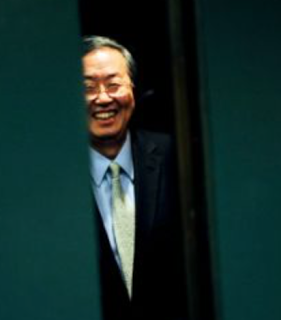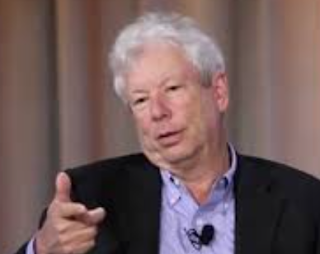
Mark Rzepczynski, Author at IASG
Prior to co-founding AMPHI, Mark was the CEO of the fund group at FourWinds Capital Mgmt. Mark was also President and CIO at John W. Henry & Co., an iconic Commodity Trading Advisor. Mark has headed fixed income research at Fidelity Management and Research, served as senior economist for the CME, and as a finance professor at the Univ. of Houston Baer School of Business.

Interest Rates for the Ages – “Winter is Coming” for Bonds But It Can Take a Number of Forms
The Bank of England research piece, Eight centuries of the risk-free rate: bond market reversals from the Venetians to the ‘VaR shock’ by Paul Schmelzing, is important reading for any investor. It places the current bond rally which has been going on for over three decades in the long term context of the last 700 years. This bond bull movement is exceptional but not yet extraordinary when look at through history. Unfortunately, all bond rallies will end, but the reasons for ending may vary.
Col. Jessup, Managed Futures, and Code Red for Liquidity
As we approach year-end, it is a good time to think about liquidity and exit strategies from current allocations. Many alternative investments are just not liquid when you need it, even if it is a daily fund. Of course, there is a price or cost with liquidity. Investors may exit but at onerous levels; however, those alternatives that focus trading on liquid instruments will have an advantage over complex strategies or funds that focus on asset that have lower liquidity to start with. Searching for liquidity in a market downturn is a losing game.

VaR – Good for a Manager, But Bad for the Markets as a Whole – Call it the “Paradox of VaR Risk Management”
So if there’s a big market sell-off and as a response the VaR overreacts and shoots up, then many investors are kind of forced to sell because they have to stay within their VaR limits and this selling will then be done in an already collapsing market…rigorous use of VaR measures undermines the stability of markets.
It’s the type of risk management practice that works well as long as it is not needed; just like Bernanke observed after the credit crisis about their standard models that proved to be “successful for non-crisis periods”.
-Harold de Boer Transtrend
Opalesque Roundtable series ’17 Netherlands
Risk Parity With Strong Performance, Yet Global Macro – Managed Futures May Be a Better Choice to Offset Mispricing Risk
The positive performance of risk parity products has been sneaking up on clients after poor returns in 2015. This long-only product have done much better than many other multi-asset hedge fund strategies in the last year with the HFR 12% vol institutional index being up 9.46% through September; however, it has been riding the wave of asset price mispricing or overvaluation.

Formal or Informal Predictive Procedures – If it is Repetitive, Go with the Formal Approach
The human brain is an inefficient device for noticing, selecting, categorizing, recording, retaining, and manipulating information for inferential purpose.- W.M. Grove and P.E. Meehl
If those are all the things that the human brain is inefficient with, what is left over? A lot, but there has to be focus on using the brain for the right problems and when to change the thinking process.

Curiosity – There Is More Than One Type and Hedge Fund Managers Need Them All
What makes a good investment manager? One trait not often talked about is curiosity. You cannot find new or unique opportunities if you are not curious; however, the concept or meaning of curiosity for investment management may be hard to define.

Understanding Investor Preferences Is Not Easy – Just Ask Them
The line between recent “exotic preferences” and “behavioral finance” is so blurred that it describes academic politics better than anything substantive. – John Cochrane University of Chicago
John Cochrane, as well as others in finance, has focused on the academic issue of defining preferences for investors at an abstract level, but the issue becomes a reality when trying to extract preferences from investors to help build a portfolios.
Time Series or Cross Sectional Momentum – Which is Better? Your Choice May Matter
The marketplace is abuzz with the value of momentum trading, but a closer inspection shows that it is packaged in two major strains, time series and cross-sectional momentum. The traditional trend-following CTA focuses on time series momentum while the most of the equity research and implementation is conducted through the cross-sectional approach. There is similarity between these approaches, but there are also enough differences so that the return profile for each will not be the same.

If You Take Away the Fed Balance Sheet, Should the Bond Premium Be Negative? Term Premium Reality
The Wall Street talk is that all markets are over-valued, yet any valuation has to be placed in context. For fixed income, this is not easy given you have to make a judgment on both the real rate of return and expected inflation. Additionally, there is a need to measure the term premium associated with bonds. The premium measures the compensation necessary for investors to hold longer duration bonds versus a series of successive short bonds given the volatility and uncertainty associated with real rates and inflation. The term premium is not directly observable and is difficult to measure but has intuitive appeal.

Renaissance in Global Macro – It Is All About Global Disruption and “Creative Destruction” – Here Is One Avenue for Dislocation
Barron’s published a provocative piece from my friend John Curran, The Coming Renaissance of Macro Investing: The petrodollar system is being undermined by exponential growth in technology and shifting geopolitics. Coming: a paradigm shift. The concept behind this regime shift or dislocation ties together finance, technology, and global trade. Changes in the flow of trade based on shifting patterns of economic growth with disruptions in technology are going to spill-over to financial markets and prices. Capital flows are reactive to broader movements in power, politics, economic growth, and trade.

Zhou Xiaochuan – The Central Banker Even Quants Should Have Known. But Who Will Come Next?
You have heard of Yellen (Fed), Draghi (ECB), Kuroda (BoJ), and Carney (BOE), but most cannot name any China central banker, yet the moves of this bank may be more important than the four when thinking about the future of world currency hegemony. Zhou Xiaochuan has been in the news just before the Chinese Congress with a strong appeal for financial reform. This is reform for further ascent of China as a major financial player. He has followed this path across his central banking career, but he is set to retire in January.
Diversification Beyond 60/40: A Path to Improved Portfolio Performance
“Enough with this diversification talk, I’ve got my 60/40 and I am happy!” The 60/40 stock/bond portfolio mix has become a standard reference or benchmark for many investors, yet its performance versus a truly diversified portfolio is mixed.

Richard Thaler – Nobel Prize Winner – The Economist Who Provides a Foundation for Rules-Based Managed Futures
We congratulate Richard Thaler on winning this year’s Nobel Prize in Economics. His relentless research on the failings of rational behavior in human decision-making has had a significant impact in finance and economics. His prolific work is the foundation for all of what we call behavioral economic and finance. Prior to Thaler, economist focused on Homo Economicus, the rational man that does not make mistakes or misjudgments. Thaler showed through test after test that we make mistakes and have biases. He did this albeit radical work not as an outsider to finance like Dan Kahneman but as a economist steeped in the neoclassical tradition.